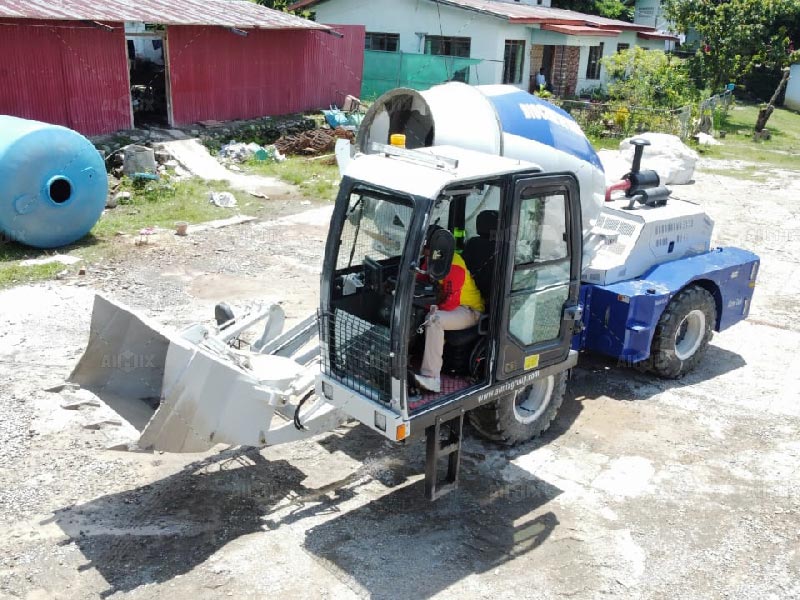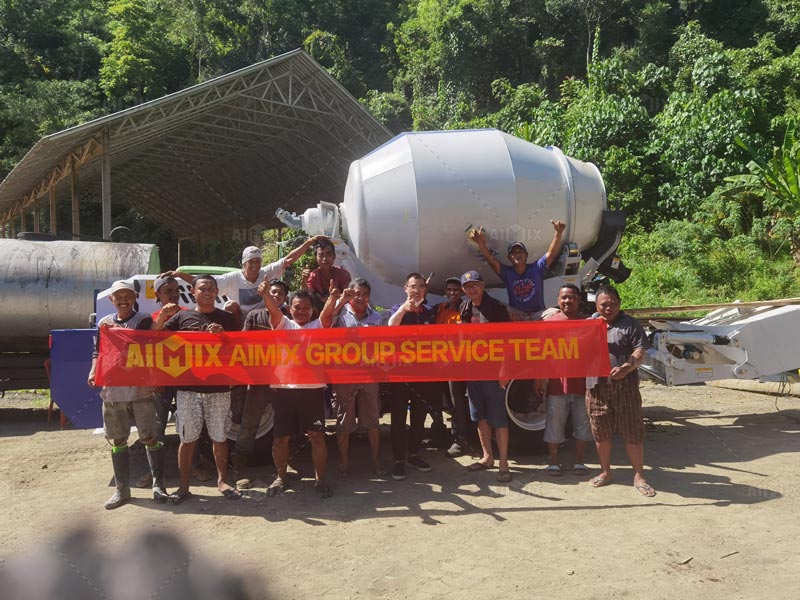Self-loading concrete mixers have revolutionized the construction industry by offering an efficient, mobile, and versatile solution for producing and delivering concrete on-site. These machines are widely used in various applications, from road construction to building development, reducing manual labor and increasing productivity. This article explores their role in different construction sectors, highlighting their benefits, functionality, and technological advancements.
The Role of Self-Loading Concrete Mixers in Construction
What Is a Self-Loading Concrete Mixer?
A self-loading concrete mixer is an all-in-one machine that combines loading, mixing, transportation, and discharging capabilities. It features an integrated loading bucket, a rotating drum, and an operator’s cabin, making it a highly efficient solution for concrete production in remote or urban construction sites. Unlike traditional concrete mixers, self-loading mixers(auto hormigonera) allow operators to prepare fresh concrete on demand, reducing material waste and enhancing quality control.
Key Features of a Self-Loading Mixer
- Automated loading system – Reduces the need for manual material handling.
- Rotating mixing drum – Ensures uniform concrete consistency.
- Water control system – Maintains precise water-to-cement ratios.
- Hydraulic operation – Enhances efficiency in material loading and mixing.
- Four-wheel drive mobility – Enables movement on rough terrain.
- Operator’s cabin – Provides comfort and control over mixing and pouring.
- Compact and versatile design – Suitable for confined spaces and various job sites.

Applications in Road Construction
Enhancing Roadbuilding Efficiency
Self-loading concrete mixers(autohormigonera en Chile) play a crucial role in road construction by providing an on-site mixing solution that eliminates the need for separate batching plants. Their mobility allows them to operate in remote locations where traditional concrete supply methods may not be feasible. Additionally, their rapid mixing capability ensures continuous concrete production, improving project timelines.
Key Benefits for Road Construction
- Rapid concrete production – Ensures continuous supply for road paving.
- On-site mixing – Reduces transportation costs and delays.
- Improved work efficiency – Operators can produce and pour concrete without waiting for external deliveries.
- Reduced labor dependency – Minimizes the need for additional workers.
- Adaptability to remote locations – Ideal for highway, rural road, and infrastructure projects.
Application Areas in Road Development
- Highway construction – Provides on-site concrete for pavement and barriers.
- Rural road projects – Enables construction in locations with limited infrastructure.
- Bridge construction – Delivers mixed concrete to hard-to-reach areas.
- Pavement repairs – Allows quick response for road maintenance work.
- Drainage and culvert projects – Facilitates concrete placement in stormwater management systems.
Impact on Building Development
Revolutionizing Concrete Supply for Buildings
Building construction requires a consistent and timely supply of concrete for foundations, columns, walls, and floors. Self-loading mixers(autohormigonera Perú) offer an on-site solution, eliminating reliance on third-party concrete suppliers and reducing material wastage. By producing fresh concrete at the construction site, these machines improve quality control and reduce project delays.
Advantages in Building Construction
- Improved concrete consistency – Automated systems ensure precise mixing ratios.
- Reduced construction time – Continuous concrete supply speeds up project completion.
- Cost-effective solution – Eliminates the need for centralized batching plants.
- Flexible application – Can be used for residential, commercial, and industrial building projects.
- Minimized concrete waste – Mix only the required amount, reducing excess material.
Self-Loading Mixers in Different Building Applications
- Foundation pouring – Provides high-strength concrete for structural stability.
- Multi-story buildings – Ensures an uninterrupted supply of concrete for large projects.
- Prefabricated structures – Offers precise mixes for modular construction.
- Small-scale developments – Ideal for housing and community projects.
- Infrastructure projects – Supports water tanks, retaining walls, and industrial facilities.

Technological Advancements in Self-Loading Concrete Mixers
Smart Automation and Digital Integration
Modern self-loading mixers(autohormigonera Colombia) are now equipped with advanced automation systems that improve efficiency and accuracy. Some machines feature:
- Digital weighing systems – Ensures precise material proportions for consistent quality.
- GPS tracking – Enhances fleet management and real-time monitoring.
- Self-diagnostic systems – Identifies maintenance needs to reduce downtime.
- Remote control operation – Allows seamless monitoring and control from a distance.
Eco-Friendly Innovations
Manufacturers are focusing on sustainability by integrating fuel-efficient engines and alternative power sources. Features such as:
- Low-emission engines – Reduce environmental impact.
- Recycled material compatibility – Supports eco-friendly construction practices.
- Water recycling systems – Optimize water usage during mixing.
Efficiency and Cost-Saving Aspects
Fuel and Material Optimization
Self-loading mixers optimize material usage by ensuring precise dosing and reducing wastage. Their fuel-efficient engines contribute to cost savings, making them an economical choice for construction projects. Additionally, their ability to transport and mix concrete simultaneously reduces the need for separate transport vehicles, further lowering operational costs.
Reduced Need for Additional Equipment
Since self-loading mixers handle multiple functions, they reduce the need for separate concrete batching plants, transit mixers, and loaders, lowering equipment investment costs. This integration makes them particularly valuable for small- to medium-scale projects where budget constraints are a concern.
Time-Saving Benefits
With their ability to mix and pour concrete directly on-site, self-loading mixers significantly cut down waiting times, ensuring faster project completion. Their efficiency minimizes work interruptions caused by delays in concrete delivery, improving overall productivity.
Choosing the Right Self-Loading Mixer for Your Project
Considerations for Selection
When choosing a self-loading mixer, factors such as drum capacity, engine power, mobility, and automation level should be considered based on the project’s scale and requirements. Additional factors include:
- Terrain conditions – Four-wheel drive is ideal for rough landscapes.
- Batching capacity – Choose based on daily concrete production needs.
- Technology features – Advanced models offer automation and smart controls.
- Maintenance support – Availability of spare parts and service centers.
Comparing Different Models
Manufacturers offer various self-loading mixers with different capacities and features. Evaluating specifications and comparing brands can help in selecting the best model for your needs. Key brands provide detailed performance data, enabling buyers to make informed decisions.
Investment vs. Long-Term Benefits
While self-loading mixers require an initial investment, their efficiency, reduced labor costs, and enhanced productivity provide long-term financial benefits. Construction companies that invest in these machines often experience lower operational expenses and faster project turnaround times, making them a cost-effective choice in the long run.
Conclusion
Self-loading concrete mixers have transformed the construction industry, from road infrastructure projects to large-scale building developments. Their ability to efficiently mix, transport, and pour concrete on-site enhances productivity, reduces costs, and accelerates project timelines. Whether used for road construction, building development, or infrastructure projects, self-loading mixers provide a flexible and reliable solution for modern construction demands. With continuous advancements in technology and sustainability, these machines are expected to play an even greater role in the future of construction.